- Three strikes on al-Maghazi and Rafah last month
- Apparent direct attacks on civilians killed 32 children
- Strikes hit children playing foosball and homes as families slept
The International Criminal Court should investigate as war crimes three Israeli air strikes that killed 44 Palestinian civilians, including 32 children, in the occupied Gaza Strip last month, Amnesty International said today.
The strikes – one on al-Maghazi on 16 April, and two on Rafah on 19 and 20 April 2024 – also injured at least 20 civilians, and are further evidence of a broader pattern of war crimes committed by the Israeli military in the occupied Gaza Strip in the last seven months.
These devastating strikes have decimated families and cruelly cut short the lives of 32 children
Erika Guevara-Rosas, Amnesty International's Senior Director for Research, Advocacy, Policy and Campaigns.
“These devastating strikes have decimated families and cruelly cut short the lives of 32 children,” said Erika Guevara-Rosas, Amnesty International’s Senior Director for Research, Advocacy, Policy and Campaigns.
“Our findings offer crucial evidence of unlawful attacks by the Israeli military as the Prosecutor of the International Criminal Court applies for arrest warrants for senior Israeli and Hamas officials, including Israeli Prime Minister Benjamin Netanyahu. As the Israeli military continues to escalate its ground incursion in Rafah, these cases also illustrate the urgent need for an immediate ceasefire.
“Despite growing calls to end arms transfers to Israel, a UN Security Council resolution ordering a ceasefire, and world leaders warning against the Israeli ground incursion into Rafah, the Israeli military has continued to escalate its operations, including these unrelenting attacks on civilians.
“The cases documented here illustrate a clear pattern of attacks over the past seven months in which the Israeli military has flouted international law, killing Palestinian civilians with total impunity and displaying a callous disregard for human lives.”
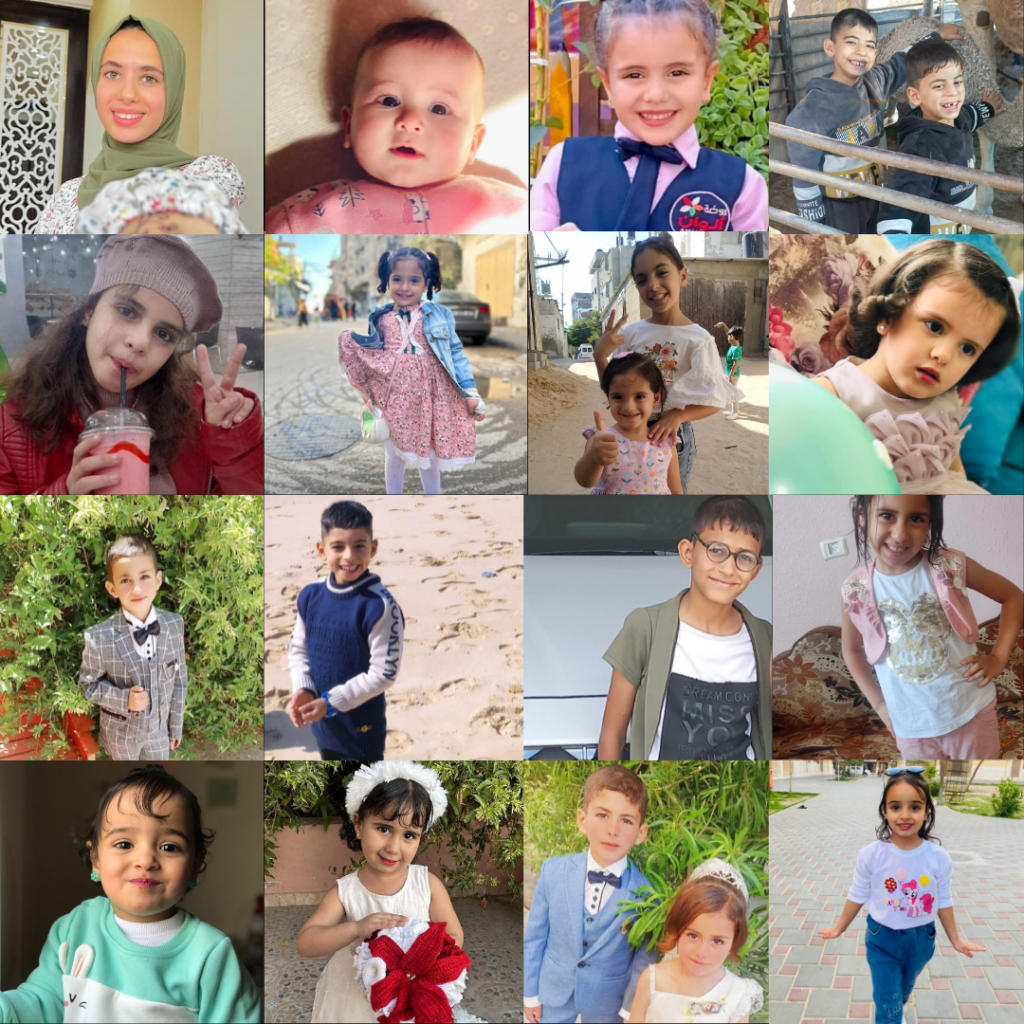
Since October 2023, Amnesty International has conducted in-depth investigations into 16 Israeli air strikes that killed a total of 370 civilians, including 159 children, and left hundreds more wounded. Amnesty International has found evidence of war crimes by Israeli forces, including direct attacks on civilians or indiscriminate attacks, as well as other unlawful attacks and collective punishment of the civilian population.
For this latest investigation, Amnesty International interviewed 17 survivors and witnesses, surveyed the locations of the strikes, visited a hospital where the wounded were receiving treatment, photographed remnants of the munitions used in the attacks for expert identification, reviewed video and photographic material obtained from local sources and available on social media, and examined satellite imagery of the locations.
In all three cases, Amnesty International did not find any evidence that there had been any military targets in or around the locations targeted by the Israeli military, raising serious concerns that these attacks amount to direct attacks on civilians and civilian objects, which are war crimes. Israel has not provided any information about the attacks in Rafah, and has only provided general allegations, which it later contradicted, regarding the attack on al-Maghazi.
Even if Israeli forces had intended to target legitimate military objectives in the vicinity of these three strikes, the evidence indicates these attacks did not distinguish between military objectives and civilian objects, and as such would therefore be indiscriminate. Indiscriminate attacks that kill or injure civilians, or destroy or damage civilian objects, are war crimes.
The evidence collected by Amnesty International also indicates the Israeli military failed to provide warning – at minimum to anyone living in the locations that were hit – before launching the attacks.
On 7 May 2024, Amnesty International sent questions regarding the strikes to the Israeli authorities. At the time of publication, no response had been received.
Al-Maghazi refugee camp: foosball table strike kills 15 civilians
On 16 April at approximately 3.40pm, an Israeli air strike on al-Maghazi refugee camp in central Gaza killed 10 children aged between four and 15, and five men aged between 29 and 62. The men killed in the strike included a barber, a falafel seller, a dental assistant, a football coach, and an older man with a disability. More than a dozen residents, most of them children, were injured.
The munition landed in the middle of a market street where children were playing around a foosball table. Amnesty International reviewed four videos and 22 photographs filmed by residents and journalists, and also taken at the scene by its fieldworkers.
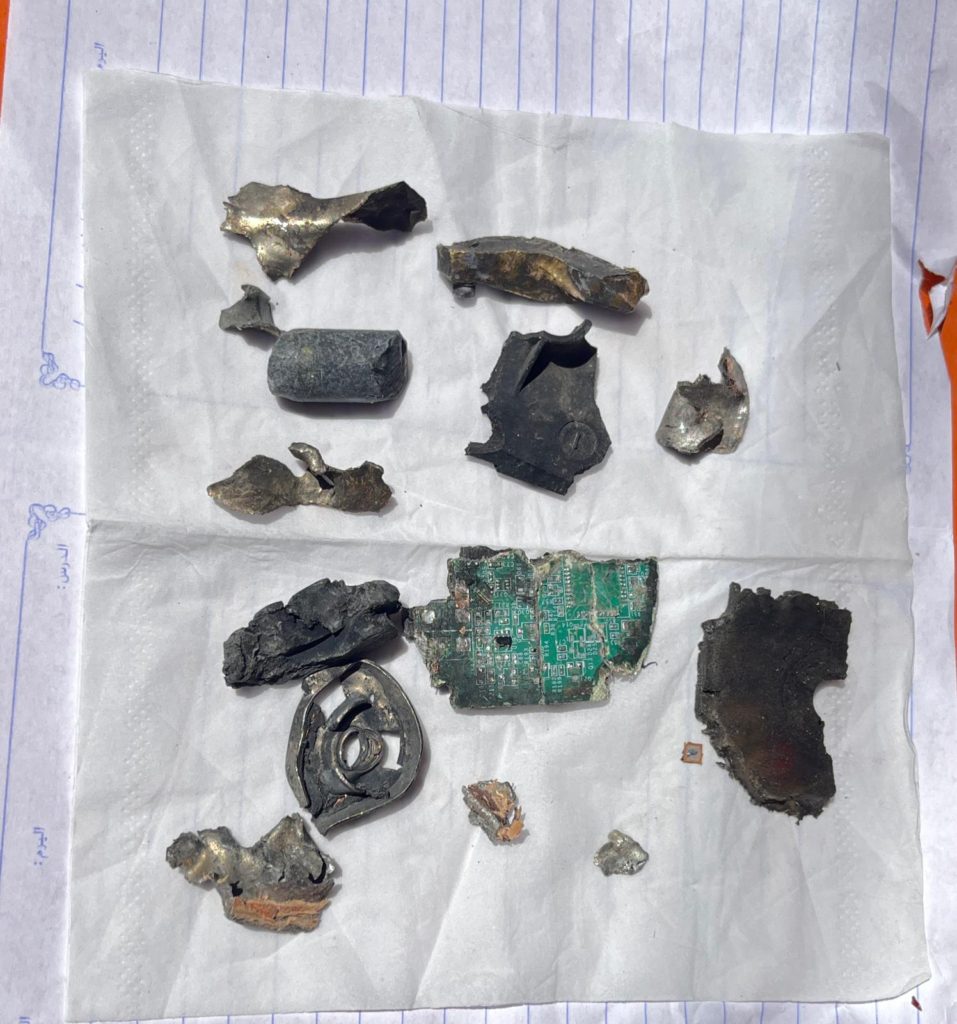
Damage from the weapon’s fragments is visible on the foosball table, on nearby vehicles, and on the walls of surrounding houses and shops. The pattern of damage at the scene, and the electronic components in the recovered fragments, matched that of small precision-guided missiles and glide bombs launched by Israeli drones. No helicopter or planes were reported in the area that day, while drones were heard consistently according to witnesses interviewed by Amnesty International.
Two of Jaber Nader Abu Jayab’s children were killed in the strike. The 34-year-old told Amnesty International: “I was at home when I heard the strike. I thought it was further away but as I went out, I realized that it was right by our street, about 20 metres away. There were children killed and injured on the ground all around.
“I found my sister’s son, Mohammed (age 12). He was badly injured and died two days later. Then I found my daughter Mila (four). She was badly injured and was taken to the hospital, but when I went to the hospital about an hour later, I found that she had died shortly after… Then I saw my daughter Lujan (nine), she was dead.” His son Ahmed (seven) was badly injured but survived.
Five days after the strike, Rajaa Radwan, 10, told Amnesty International at the scene of the attack: “I was playing at this foosball table… I told my friends to continue and I went to the shop next door and then went home… I was lucky that I was not injured, but my friends Raghad and Shahd were both killed.”
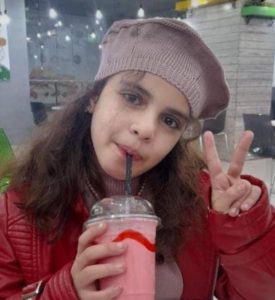
Mohammed Jaber Issa, a 35-year-old science teacher who lost relatives in the strike, told Amnesty International that Shahd Odatallah, 11, was killed as she visited the supermarket to buy cookies: “She died while holding a piece of ma’moul [cookie] in her hand.”
He added: “One of the children killed in the strike fled al-Tuffah neighbourhood in Gaza City; he fled hunger there only to be met by death here.”
Mahmud Shanaa, 37, who was injured in the strike, told Amnesty International: “The children and those around them were killed because the missile landed so near the foosball table. There are always lots of children around the foosball table. Children don’t have anywhere else to go play, and now with the dangers of the war they don’t go far and play outside their homes.”
Responding to CNN, the Israeli military initially said it struck a “terror target” in al-Maghazi but declined to provide any additional details or evidence. They later said they had no record of the strike. The Israeli military also declined to answer questions regarding the nature of the target, or whether any fighters were killed.
Rafah: two strikes in two days kill 29 civilians
On 19 April at approximately 10.15pm, an aircraft bomb struck the four-storey home of the Abu Radwan family in the Tal al-Sultan neighbourhood in West Rafah, killing nine members of the family – six children, two women and one man – and injuring five other relatives (three children, a man and a woman). The strike also injured a woman and her daughter from another family who lived in the house next door.
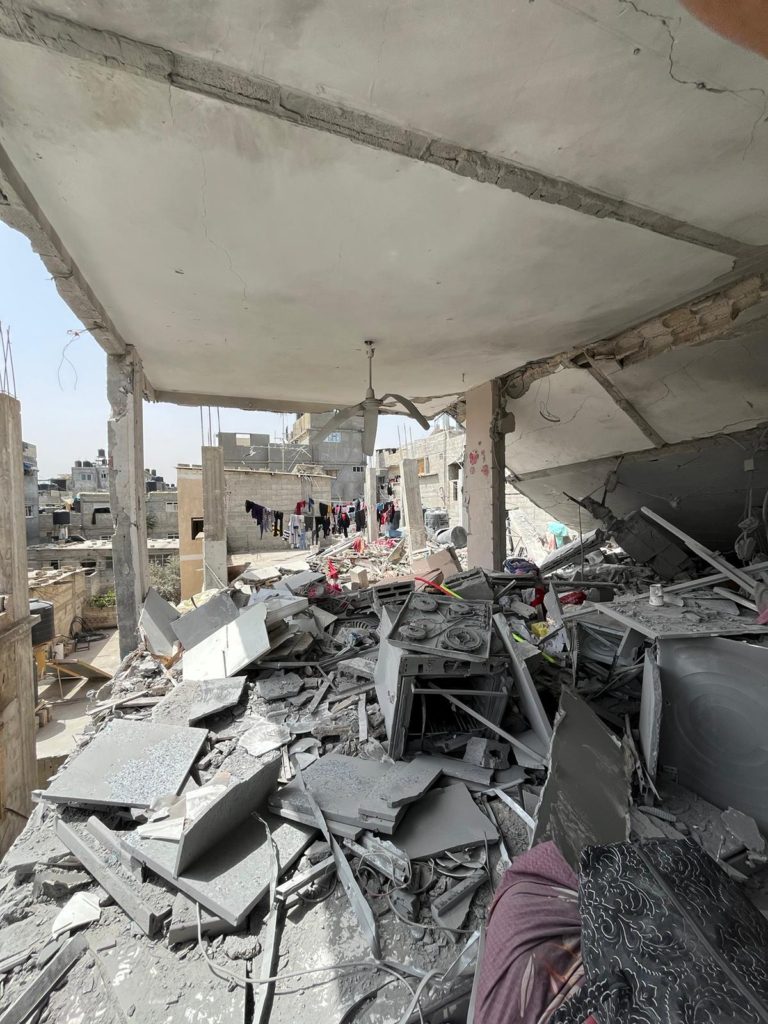
Subhi Abu Radwan, a 72-year-old retired civil servant, survived the strike. One of his sons and daughter-in-law, a daughter, and six of his grandchildren were killed. He told Amnesty International: “I was still awake when the strike happened, while my children and grandchildren were already asleep. I was downstairs and did not hear an explosion, but became aware of the strike as the house shook and everything became full of dust and rubble.
“I started to scream for help and neighbours and rescuers came and helped us. The missile came through the roof, on the third floor and went down to the second floor where it exploded, killing everyone there…
“I did not know who was dead or alive until later at the hospital. It was then that I discovered how many had died. The dead and the injured were found outside in the rubble; they had been thrown out of the building by the force of the explosion.”
Nisrine Saleh, a 40-year-old teacher and another daughter-in-law of Subhi, was injured in the strike. She told Amnesty International: “I was unable to move for several days after the strike. Doctors told me that I damaged my vertebrae, and I feared that I would remain paralysed but thankfully I am beginning to recover some mobility… I still cannot fathom fully what has happened to our family. Our family was destroyed for no reason.”
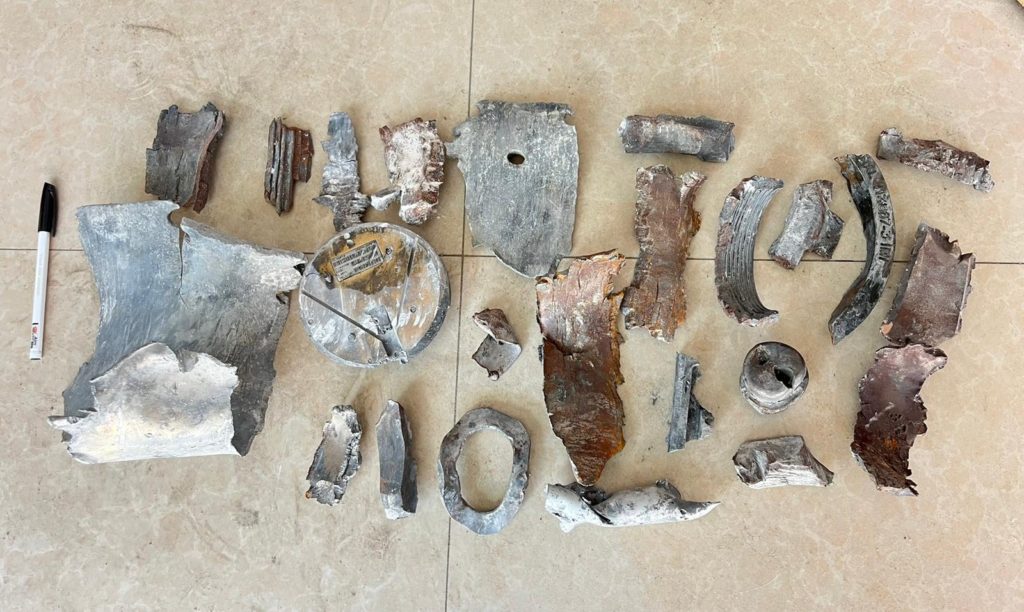
From photographs of fragments recovered at the scene, Amnesty International’s weapons expert identified the munition as an MPR 500, a 500lb bomb made by the Israeli firm IMI. Remnants of the bomb’s precision guidance package were marked with a CAGE code of 0UVG2, indicating at least a portion was manufactured by AeroAntenna, a US defense contractor based in California.
Amnesty International reviewed 17 photographs and one video of the attack site taken at the scene by Amnesty International’s fieldworkers. The pattern of damage at the Abu Radwan house is consistent with an aircraft bomb of this size. Analysis of satellite imagery of the site shows subtle changes and damage to the roof between 16 and 20 April, which is consistent with ground photos and witness accounts.
The following day, 20 April, a strike at approximately 11.20pm destroyed the Abdelal family home in the al-Jneinah neighbourhood in eastern Rafah, killing 20 family members – 16 children and four women – and injuring two other children. The victims were asleep. The only survivors are three fathers of the children, grandfather and some of the children who were sitting in the reception room at the entrance of the family farm, approximately 100 metres from the house.
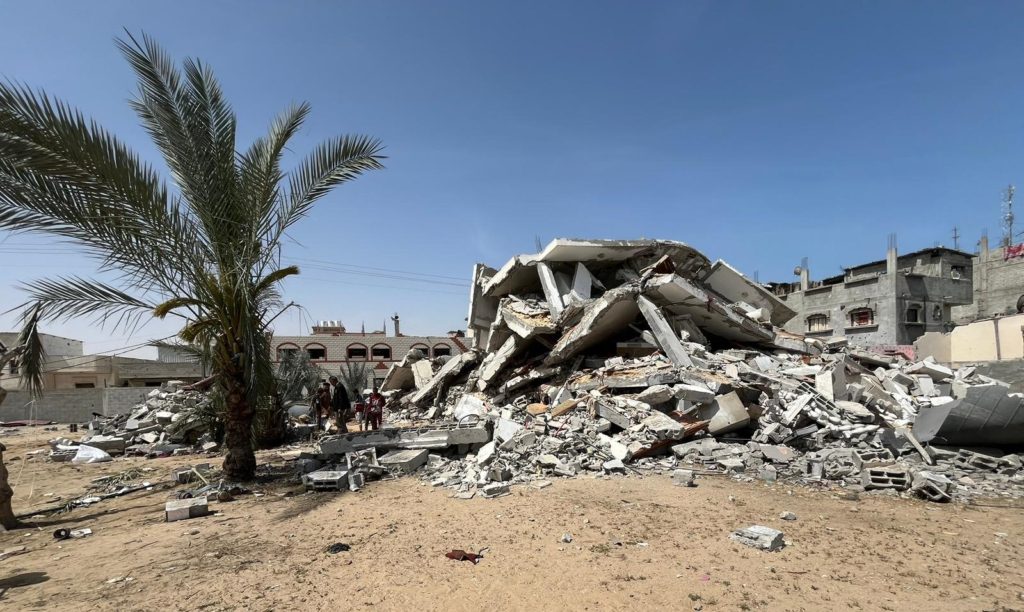
Hussein Abdelal, the owner of the house, lost his mother, his two wives and 10 of his children (aged from 18 months to 16 years) in the strike. He told Amnesty International: “I keep looking in the rubble for whatever I can find from my mother and my children. Their bodies were torn to shreds. I found shreds, body parts of my children, I found them without heads. It’s inhumane, it [the bomb] destroyed everything, our lives, our homes, even the animals were killed…
“Why did they treat us so inhumanely? We have nothing to do with anything; have not done anything wrong… I still cannot fathom what happened.”
The collapsed floors and massive structural damage to the Abdelal family home, analysed by Amnesty International from 14 photographs and three videos taken at the scene by Amnesty International’s fieldworkers, are consistent with an aircraft bomb. Analysis of satellite imagery of the site shows the destruction caused between 07.03 UTC on 20 April and 11.51 on 21 April.
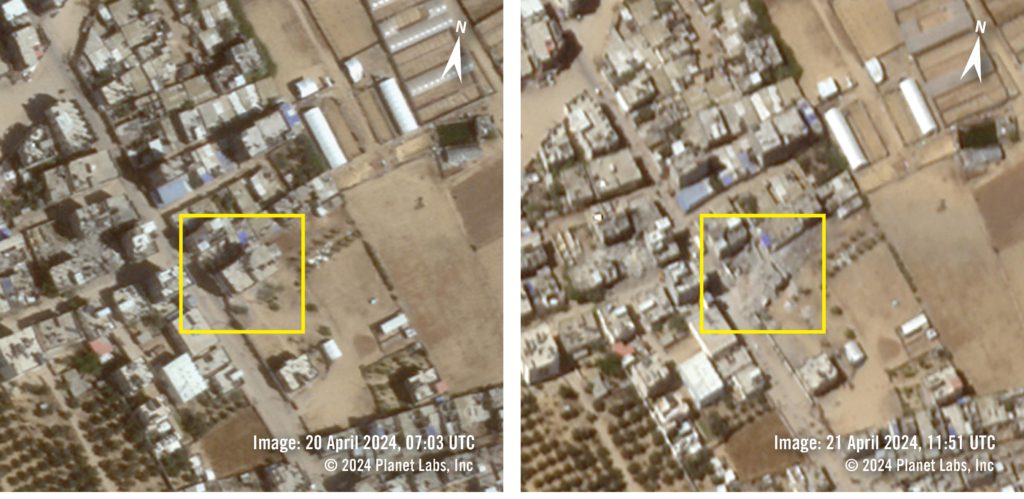
Background
Rafah had been hosting more than 1.2 million people from areas further north who were forcibly displaced since 13 October 2023, when the Israeli military issued the first mass “evacuation” order to the population of north Gaza. Gaza’s residents were forcibly displaced further southward as the Israeli military continued to expand its ground campaign.
When Israeli forces launched a full-scale ground incursion into Khan Younis, a large city north of Rafah, in February 2024, most residents fled to Rafah and some fled northwards to the central Gaza Strip, including to areas in and around al-Maghazi. Much of Khan Younis was destroyed or damaged by the time Israeli forces left in April 2024. Some 90% of Gaza’s population has been displaced at least once, and many have been forced to move several times. It is now estimated that close to one million Palestinians have been displaced in Gaza following Israel’s expansion of operations in Rafah. Last week, Amnesty International called on Israel to comply with the International Court of Justice’s order calling for it to immediately halt military operations in Rafah.
Amnesty International has also documented violations of international law by Hamas and other armed groups on and since 7 October including the deliberate killings of civilians, hostage-taking and launching indiscriminate rocket attacks on Israel. Amnesty International is calling on Hamas and other armed groups to unconditionally release all civilians who continue to be held hostage in Gaza. Hostage-taking is a war crime. Amnesty International has consistently documented violations of international law committed by Hamas and other armed groups in Gaza, including torture and ill-treatment, indiscriminate rocket attacks into Israel and those resulting in Palestinian casualties in the occupied Gaza Strip.


